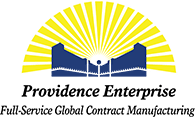Choosing the Correct Tool Cavitation
Injection molding is a great way to produce a large number of plastic components at high speed and a reasonable cost. What OEMs often overlook however, is one key question which could make this great method even better:
How many cavities should my tool have to make the most parts, at the best quality and with the highest return on investment?
Answering this question can be the OEM’s key to getting the highest ROI for tooling and production costs, and can also benefit the contract manufacturer for scheduling efficiencies. Deciding how many cavities per tool is all about making tradeoffs between the piece price, production lead times, and initial tooling costs in order to reach the lowest total production cost for producing high quality parts. Like many other optimization challenges in manufacturing, it requires close collaboration between the engineering and management teams of both the contract manufacturer and the OEM.
An Opportunity Too Often Missed
Unfortunately, this optimization step is often skipped because OEMs (and their injection molding contract manufacturing partners) don’t see eye to eye on the large benefit of increasing the number of cavities per mold.
Instead, what typically happens is that the OEM sticks with the defaults of a one cavity tool, and the specific tonnage machine the contract manufacturer suggests. From these defaults and the specs of the part itself, the parts per hour (PPH) is determined.
The OEM then projects the number of parts per year they need (formally referred to as “estimated annual usage” or EAU) and divides this EAU by the PPH to make sure that there are enough hours to meet its annual forecasted demand. If not, then increasing the cavities per mold is the obvious place to boost the PPH. It’s more cost effective than creating two or more separate molds that would run in multiple injection molding machines simultaneously. Besides, the contract manufacturer may not have open machine capacity to run multiple molds at the same time.
This standard approach works great in a lot of scenarios, but a lot of OEMs don’t realize that even if a single cavity mold can meet the EAU requirement, they can still greatly benefit from increasing the cavitation. This is true even if those additional cavities require moving production to a slightly larger tonnage machine.
Let’s use a hypothetical example to illustrate why. Suppose you are trying to make a part that has
an EAU of 20,000 pieces and you’re using a single cavity tool in a 150 ton press. The cycle time to complete each one of these parts is 30 seconds, thus resulting in a PPH of 120.
If you were to change that tool to a 2 cavity mold, it could produce 240 PPH and you would see a reduction in piece price, mainly due to the machine time required to make each individual part being cut in half. This dramatic reduction in machine time and cost, more than makes up for the slightly increased hourly rate that might be incurred moving to a larger machine (such as a 200 ton or 225 ton), and the small increase in tool cost.
The Benefits of Increasing Cavitation
This example illustrates exactly why increasing the cavities per mold very often produces a net win for customers: large increases in the PPH can be achieved with minimal increases in cost, resulting in a significant overall reduction in the final price per part. This is, after all, the key reason why OEMs choose injection molding for manufacturing their plastic components. Utilizing multi-cavity molds helps to further squeeze maximum return on production investments.
Another benefit to the increased PPH and reduced piece price via multi-cavity tools is the decreased cost incurred by deliberately overshooting an EAU (especially if it was too conservative a forecast to begin with). Creating some excess “buffer” stock may actually save some OEMs money since it’s often less expensive to make and store large amounts of fast moving inventory than to run short and incur losses due to additional mold setups and extra machine time. In effect, using multi-cavity tools can increase revenue during unexpected spikes in demand, provided a bottleneck doesn’t appear further down the production pipeline. (This theory also assumes that the product is in high demand and is in the early growth stages of its product life cycle.)
A variation of a multi-cavity tool is called a “family mold”: a tool with many cavities, each of which is for a different part. All parts are made from the same material during the same cycle, and family molds are great for similar size assembly components like electronics enclosures, provided that the same injection molding parameters will work for each individual part (cycle time, pressure, cooling rate, etc . . .).
Increasing the number of cavities in your injection molding tool can boost your profit by producing more parts for an overall lower cost when considered over the entire length of the project. In order to reap those benefits, you and your contract manufacturer must recognize this opportunity very early on during the design phase of the tooling. Providence Enterprise is a contract manufacturer who sees the opportunities for its customers in every aspect of tooling design and implementation.
From design to delivery, Providence is ready to take on your next contract manufacturing project. What can we do for you?

